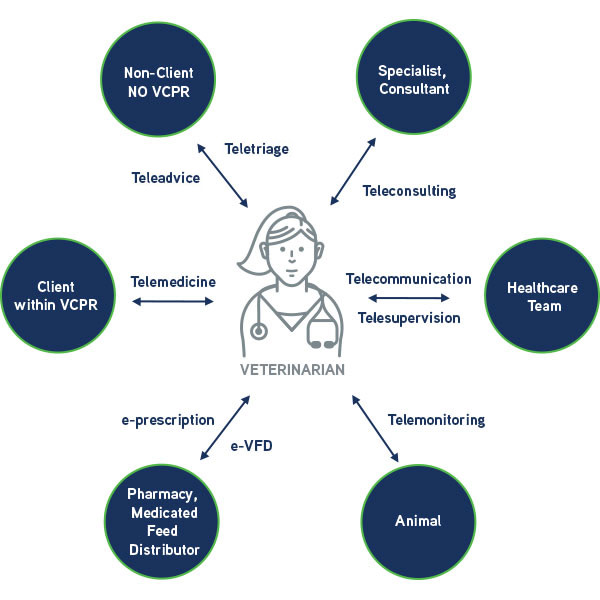Despite numerous stay-at-home orders being implemented in states across the country, veterinary practices are having different responses to the COVID-19 pandemic. While some are taking a “business-as-usual” approach, most are making sure as few clients enter the practice as possible — and others still are closing entirely.
As veterinarians and pet parents adapt to this new way of living, here are the steps some veterinary practices are taking to keep people safe while ensuring animals receive care.
Below, we've summarized a webinar from Debbie Boone CVPM (Founder, 2 Manage Vets Consulting), Jolle Kirpensteijn DVM (Chief Professional Veterinary Officer, Hill’s Pet Nutrition US), and Mark Olcott DVM (Co-Founder, VitusVet):
- Communicating with clients and teams
- Employing screening procedures, social-distancing, and good hygiene
- Working from home and using remote services
- Taking care
Communicating with Clients and Teams
The first thing to acknowledge is the importance of communicating with both clients and teams. States are changing the rules for how to run businesses and treat patients on almost a daily basis.
Some states are even allowing vets to establish VCPR digitally, while others are not. Those changes need to be communicated to teams and clients so they can change their behavior accordingly.
Many clinics are adapting to social distancing guidelines by creating pop-up tents in parking lots where they can speak with clients at a safe distance. Some are also accepting pets in the parking lot, then calling for payment later over the phone. Other processes can also help, such as establishing patient history and client consent over the phone and delivering prescriptions and other products directly to clients.
What constitutes “essential” and “elective” care is not black and white, either. For this reason, veterinary teams are discussing what they should and shouldn’t consider essential care, then informing their clients of those decisions.
To help, health organizations have put out a great deal of information that can help practices adjust. You can apply these recommendations to your practice and use the information to keep clients informed:
- The Centers for Disease Control and Prevention (CDC)
- The World Health Organization (WHO)
- The World Organization for Animal Health (OIE)
- The World Small Animal Veterinary Association (WSAVA)
- The American Veterinary Medical Association (AVMA)
- The American Animal Hospital Association (AAHA)
NOTE: To lend a hand, Pawlicy Advisor launched a different kind of COVID-19 HUB for veterinary practices that centralizes top resources covering everything from remote work to practice management, all in one place.
Employing Screening Procedures, Social-Distancing, and Good Hygiene
Because veterinary teams work so close together, there needs to be a screening procedure for everyone entering the clinic. The goal should be to keep veterinary staff seeing patients rather than becoming patients themselves.
Some of the methods being employed to screen employees and keep them safe include:
- Checking employees for fever at the beginning of their shift
- Spending less than 30 minutes per day within a 6-foot radius of anyone else
- Wearing a mask and gloves
- Practicing proper hand hygiene for a healthcare setting
- Encouraging younger, healthier employees to work more shifts
- Using tele-management to limit the number of people in the clinic
It can be challenging to keep away from colleagues while in your facility. However, utilizing outdoor spaces and encouraging employees to work from home can limit people’s exposure to each other.
Working from Home and Using Remote Services
Like other businesses, many veterinary practices are encouraging or requiring their employees to work from home whenever possible. More and more vets are exploring telemedicine, and some states have been relaxing rules regarding veterinary telemedicine to make it easier for practices to continue making appointments.

(Source: AVMA)
Other types of communications can also be handled by employees at home. Clients are likely to call to ask about how to get their animals care. They are also likely to call to request care or to have a veterinary consultation.
Clients can be informed about new processes through remote communications like email blasts, voicemails, and even text messages. This removes some of the burdens from the front desk to screen these calls. Appointments can be set using either apps or remotely through phone calls, and appointments can be moved to digital formats whenever possible.
NOTE: When discussing pet insurance you can send clients one digital brochure that helps compare plans across providers.
Finally, many practices are embracing both pet food delivery services and online pharmacies. These can be especially useful for patients who require a prescription diet that isn’t easy to find at grocery stores. Using an online pharmacy also allows your practice to keep prescription orders in-house, rather than outsource them to other providers.
Taking Care
When people are confined and unable to engage with the community as normal, it can make them depressed and frustrated. During this time, veterinary professionals are also encouraging each other to take care of themselves.
Talking a walk, staying in contact with loved ones, and focusing on the progress being made against the virus are all steps caretakers can take to keep things in perspective.
Although this is temporary, our lives will fundamentally change. Some of that change will be for the better. The hygiene habits people learn today could prevent outbreaks tomorrow, and the research being done on coronaviruses will most certainly save lives in the future.
